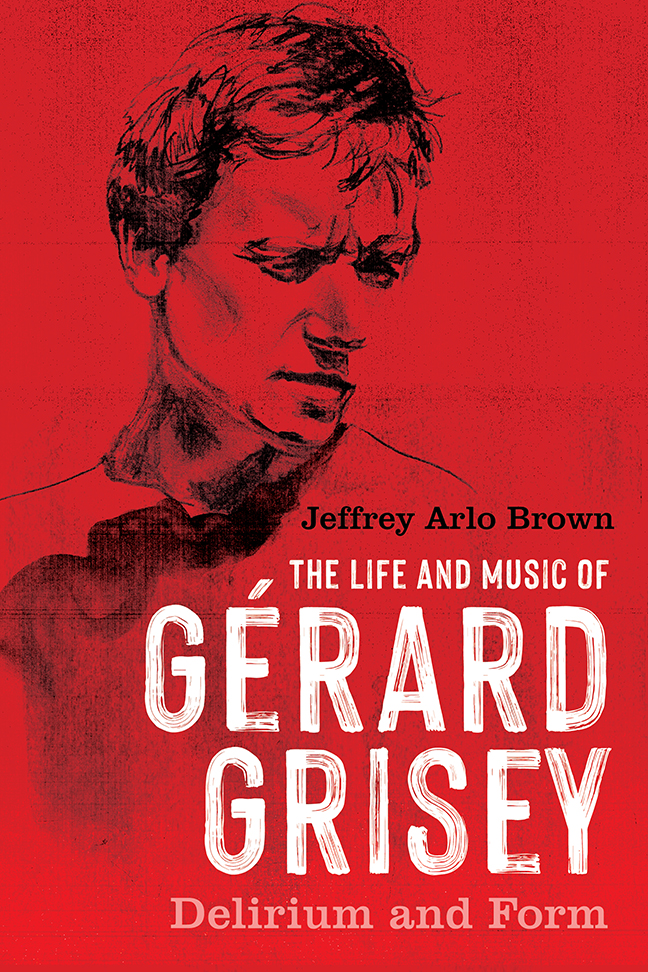Book contents
- Frontmatter
- Contents
- List of Illustrations
- Acknowledgments
- One The Lost Voice (1946–61)
- Two The Carnal Shell (1961–65)
- Three The Rhythm of Love (1965–67)
- Four Exchange Beyond Language (1968–70)
- Five The Silence that Attracts (1970–72)
- Six The Sensual Embrace (1972–74)
- Seven Ultimate Fusion (1974–78)
- Eight Astarte (1978–79)
- Nine Extreme Pleasure, Extreme Pain (1980–82)
- Ten The Grains of Sound (1982–86)
- Eleven Absolute Love (1986–88)
- Twelve Seduced by the Star (1988–91)
- Thirteen Suggestions of the Infinite (1991–96)
- Fourteen Nut (1996–98)
- Fifteen Berceuse
- Appendix: Recordings of Music by Gérard Grisey
- Bibliography
- Index
Eight - Astarte (1978–79)
Published online by Cambridge University Press: 17 December 2023
- Frontmatter
- Contents
- List of Illustrations
- Acknowledgments
- One The Lost Voice (1946–61)
- Two The Carnal Shell (1961–65)
- Three The Rhythm of Love (1965–67)
- Four Exchange Beyond Language (1968–70)
- Five The Silence that Attracts (1970–72)
- Six The Sensual Embrace (1972–74)
- Seven Ultimate Fusion (1974–78)
- Eight Astarte (1978–79)
- Nine Extreme Pleasure, Extreme Pain (1980–82)
- Ten The Grains of Sound (1982–86)
- Eleven Absolute Love (1986–88)
- Twelve Seduced by the Star (1988–91)
- Thirteen Suggestions of the Infinite (1991–96)
- Fourteen Nut (1996–98)
- Fifteen Berceuse
- Appendix: Recordings of Music by Gérard Grisey
- Bibliography
- Index
Summary
On October 10, 1978, the Ministère de la Culture announced to Grisey that its Commission de Commandes Pédagogiques had awarded him a commission for a youth or amateur orchestra, for a fee of 5,000 francs. The piece that resulted from the commission was titled Manifestations.
Grisey's original concept was for a twelve-minute piece in four movements. He only completed the first movement, a study on the harmonic spectrum called Manifestations: … pour trouver le silence (Manifestations: … to find the silence), and the fourth, a musical joke named Manifestations: pour échapper à la television (Manifestations: to escape the television). He never finished the inner movements, though he did give them names and make notes on potential forms. The second, on the theme of acoustic beatings, was to be titled … pour avoir un air de joie ( … to have a sense of joy); the third, on white noise, was tentatively named pour que les arbres… . ( … in order for the trees). Several detailed sketches for … pour avoir un air de joie exist but were never composed through. They suggest that the finished piece would have included a significant spatialization component.
The two completed movements of Manifestations (initially called Incantations) add up to a minor work, meant to be easy to perform. But they still show the extent to which Grisey's spectral ideas of structure had become anchored in his thinking. This was not a hasty commission that he could just toss off; he made detailed and intricate sketches for the piece. The improvisatory compositions of his youth and the aleatoric or installation-like pieces of his student days were now permanently banished from his compositional method, even when the stakes were low.
In the first movement of Manifestations, the two flutes, each assigned to an orchestral group, have the most difficult parts. Grisey noted this in his sketches, suggesting that the piece was composed for a particular youth orchestra. Grisey assigns each flute pitches from a harmonic spectrum on C. Flute one gets the odd partials, flute two the evens. Each flute performs a series of durations which are varied but tend to decrease in length toward the middle of the piece before tending to increase again; the number of available pitches grows at the same time, meaning that each flute has a rigorously structured and clearly audible “intensity crescendo” toward the center of the movement.
- Type
- Chapter
- Information
- The Life and Music of Gérard GriseyDelirium and Form, pp. 125 - 146Publisher: Boydell & BrewerPrint publication year: 2023

